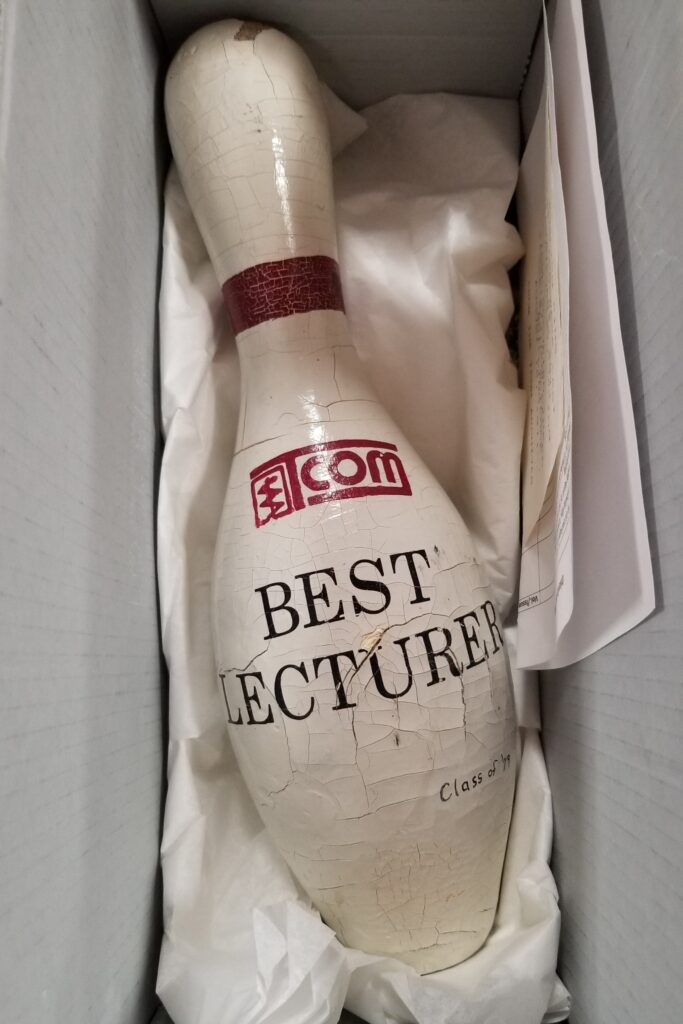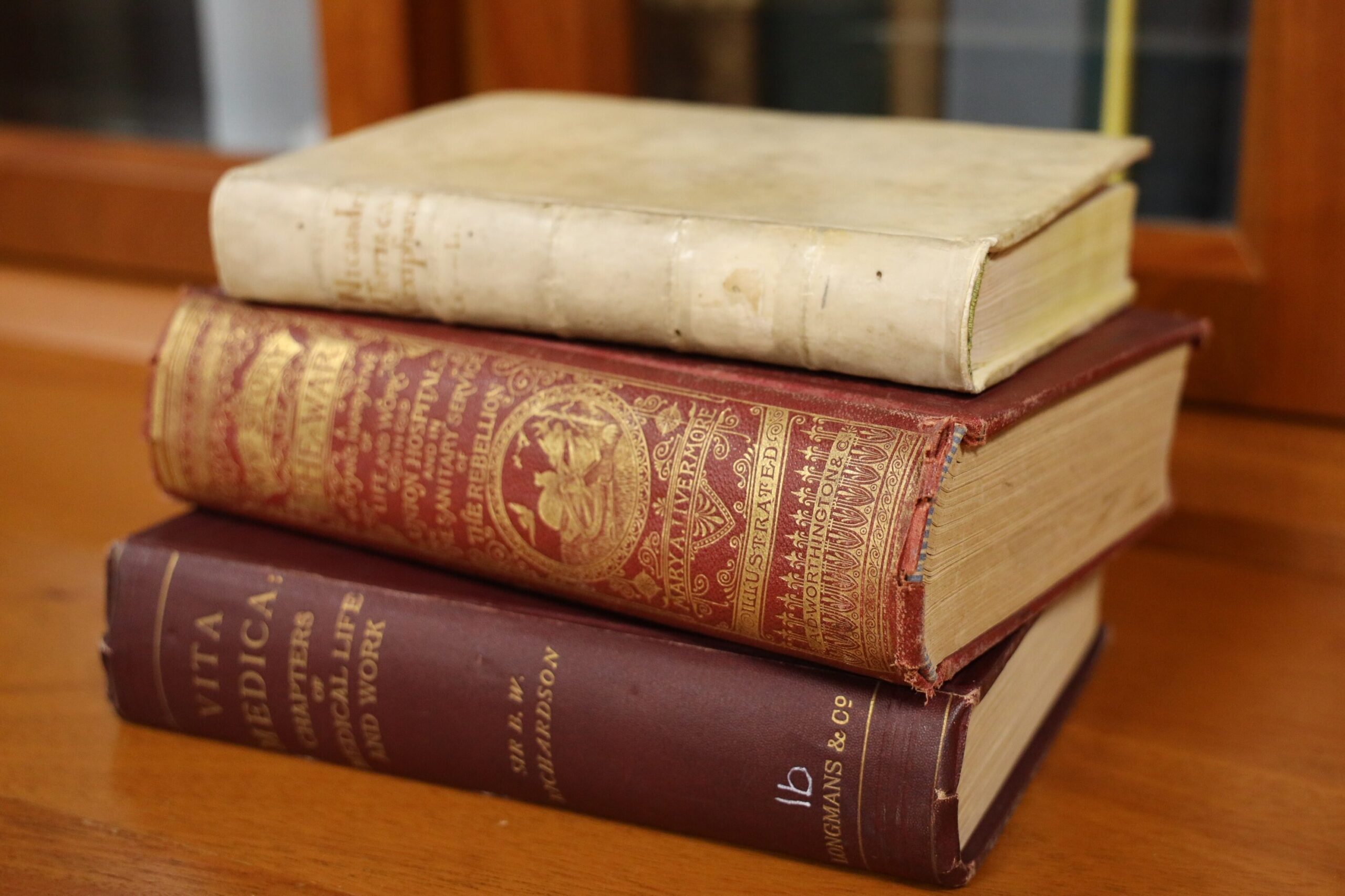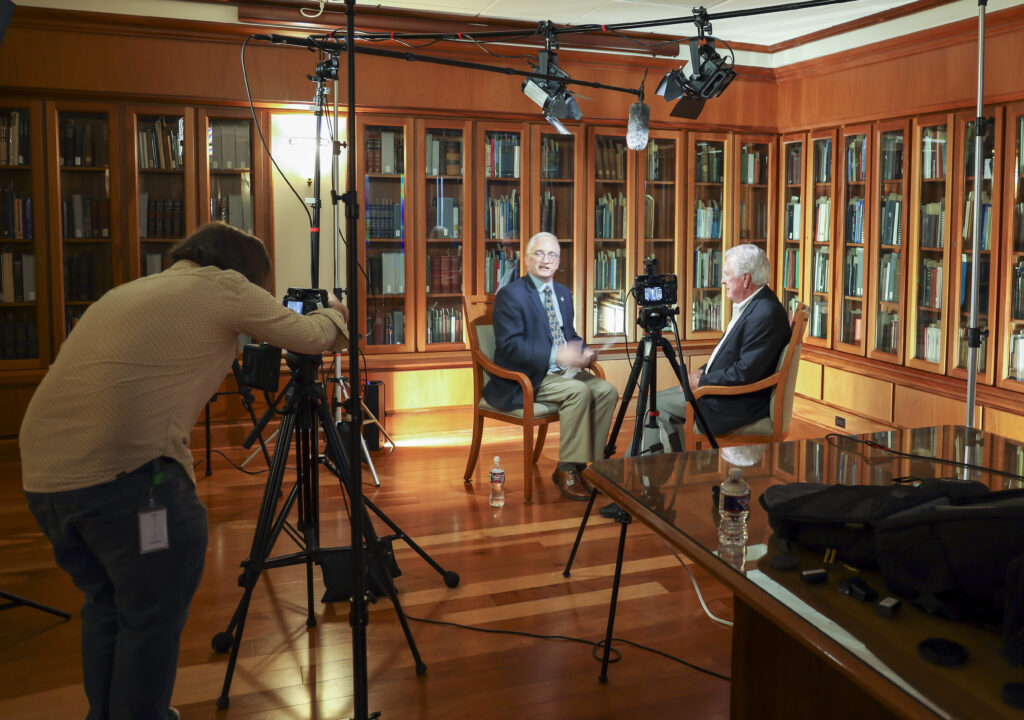About Our Collections
The UNT Health Archives & Special Collections encompasses, 350+ linear feet of archival materials, digital collections, and 2,500+ volumes in the rare and historical books collection. The Archives assesses, acquires, describes, preserves and makes available primary and secondary source materials with lasting institutional significance. Subjects include early osteopathic medicine, the history of osteopathy in Texas, historical medical collections and institutional records.
Detailed guides compiled specifically to describe the arrangement and contents of a collection and to aid in its research, called finding aids, can be accessed in the Gibson D. Lewis Health Science Library institutional repository, Scholar@UNT Health.
Harmful Language Statement
The UNT Health Archives preserves and provides access to the permanent historical records of the university and related osteopathic collections. The Archives aims to describe collection materials in a manner that is respectful to the individuals and communities who create, use, and represent its holdings. Some content in the materials or language in resource descriptions may reflect outdated, biased, and offensive views and opinions. In some instances, language contained in the collections was used by the people and organizations that created the materials or by outside sources describing materials prior to acquisition by the UNT Health Archives. UNT Health collection cataloging standards and guidelines follow those of the National Library of Medicine Medical Subject Heading (MeSH) for medical materials and Library of Congress Subject Headings for non-medical materials. The University Archives recognizes that descriptive practices and terminology evolve over time and that efforts to create respectful and inclusive descriptions must be ongoing and as such makes an institutional commitment to university values and accessibility.

Rare and Historical Books

The historical books collection contains rare books and fragile volumes requiring special treatment or protection to ensure long-term preservation. Containing over 2,500 volumes, the book collection seeks to document the founding, growth and intellectual development of osteopathic medicine and to provide historical continuity to the research and instructional activities of UNT Health Fort Worth. The collection is particularly strong in the areas of 19th century American medicine, osteopathic medicine, orthopedic manipulation, bone setting, and manual medicine.
Oral Histories
Oral history serves to collect and preserve historical information while it is still available by recording interviews with selected individuals. This is especially important for preserving the otherwise perishable information that exists only in the memories of individuals. The UNT Health Archives contains two oral history special collections: The TCOM and UNT Health Fort Worth Oral History Collection which was established in the Fall of 1980 as part of TCOM’s 10th year anniversary celebration and the Center for Human Identification Oral History Project. Through the generosity of Dan Saylak, D.O., the TOMA Archives Committee digitized the entire collection of oral histories ensuring their preservation and allowing them to be shared electronically.
Oral history interviews can be accessed in the Gibson D. Lewis Health Science Library institutional repository, the UNTHSC Scholar.

Finding Aids
Detailed guides compiled specifically to describe the arrangement and contents of a collection and to aid in its research are called finding aids. Our finding aids can be accessed in the Gibson D. Lewis Health Science Library institutional repository, Scholar@UNT Health.
Highlights from Our Collection
UNT Health Fort Worth & Texas College of Osteopathic Medicine History Collection, 1969-Present
The Texas College of Osteopathic Medicine accepted its first students in 1970 and come under the umbrella of North Texas State University, which later evolved into the UNT System, in 1975. This collection documents the history of UNT Health Fort Worth from its establishment to now.
Texas Osteopathic Medical Association (TOMA), 1900 – 2003
The Texas Osteopathic Medicine Association collection documents the history of the osteopathic profession in Texas from 1930 as the Texas Association of Osteopathic Physicians and Surgeons and as the Texas Osteopathic Medical Association from September 14, 1970 until 2003.
C. Ray Stokes Collection, 1969-1987
C. Ray Stokes was the first employee of the Texas College of Osteopathic Medicine in 1969. He served as founding director of development, business manager, purchasing agent, public relations director and as registrar. The C. Ray Stokes Collection includes agreements, reports, newsletters, meetings minutes, and a scrapbook related to Mr. Stokes’ employment with the Texas College of Osteopathic Medicine.
Virginia P. Ellis, D.O. Collection, 1972-1985
Virginia P. Ellis, D.O. was a 1936 graduate of the Kirksville College of Osteopathic Medicine and was a practicing pediatrician in Fort Worth for a number of years before joining the faculty at the Texas College of Osteopathic Medicine in 1972 where she taught the history of medicine. The Virginia Ellis, D.O. Collection consists of papers, memorabilia, and committee reports.
History of Medicine Collection, 1693-2015
The History of Medicine Collection contains various historical papers, illustrations, presentations, historic medical equipment, and memorabilia that document the evolution of the medical field from the 17th century to the 21st century.
How to Utilize the Archives
Visit UNT Health Archives & Special Collections
Faculty, students, and visitors are welcomed to utilized the unique resources in the Archives for their study and research. The materials cannot be checked out; however, they may be used within the Archives area.
Appointments can be scheduled between 8:00 A.M. and 3:00 P.M. on weekdays, excluding university holidays and other campus closings.
Digitization & Reproduction
The University Archives offers digital reproduction services of its materials to students, faculty, staff, and the general public to facilitate private study, research, or scholarship. Reproductions of materials can be provided when such reproductions will not damage the original, violate copyright, or violate any restrictions imposed by the donor.
